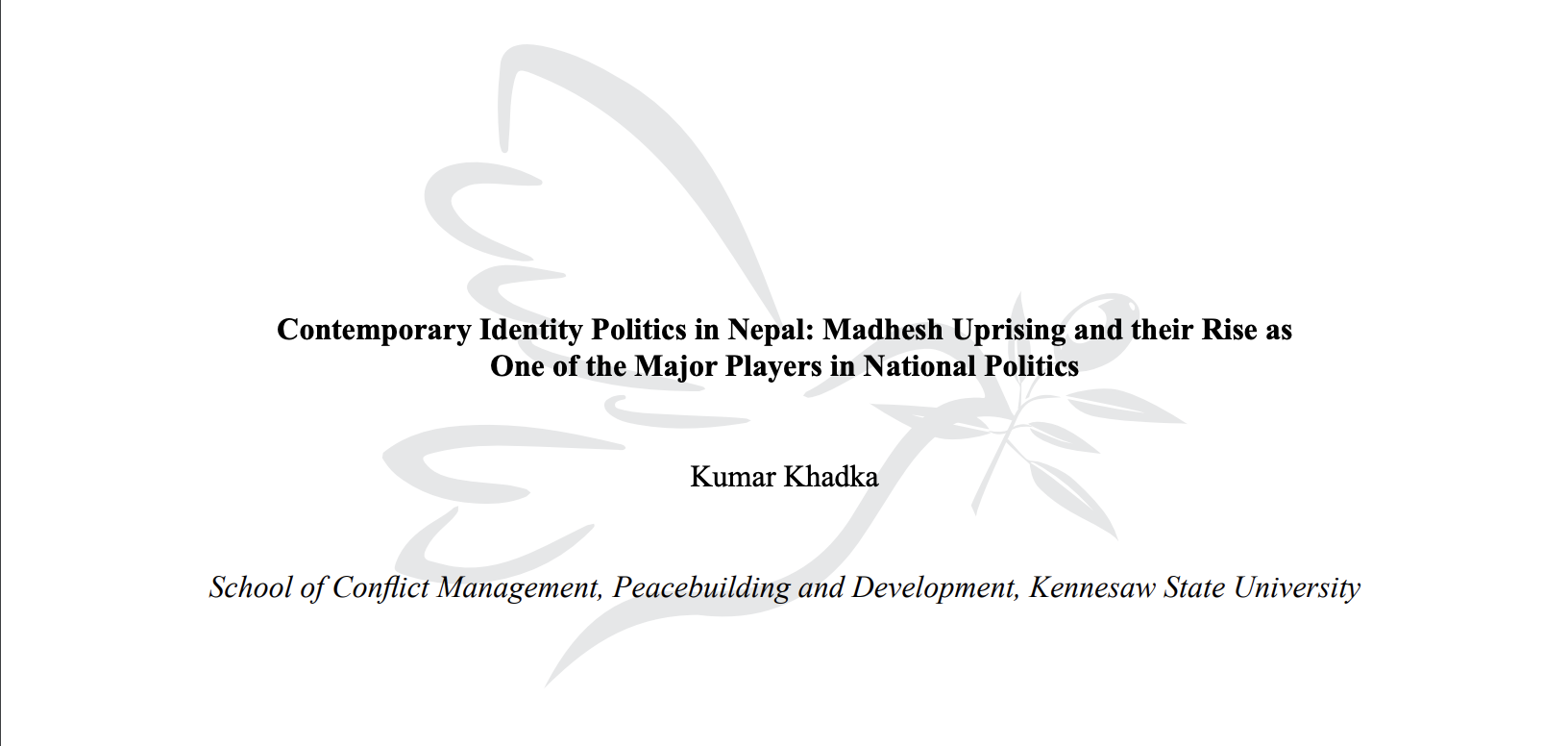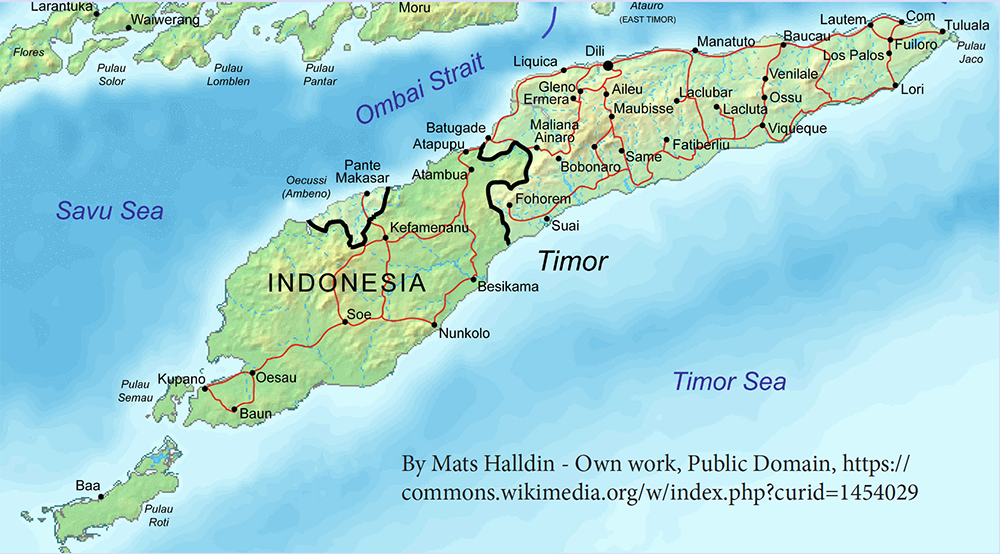


Kumar Khadka, Ph.D. Candidate in International Conflict Management, published "Contemporary Identity Politics in Nepal: Madhesh Uprising and their Rise as One of the Major Players in National Politics" in the Journal of Living Together, volume 4-5, issue 1, pp. 193-203.
Within the last two decades, Nepal experienced some violent political uprisings. Madhesh (also known as the “Terai” region of Nepal) launched a violent political movement called Madhesh Uprising in 2007. The silence of the interim constitution of 2007 on federalism, representation and an inequitable electoral system made Madhesh unhappy. Madhesh demanded complete regional autonomy, rights of selfdetermination, and a single Madhesh province. The Uprising was considered as the representative voice of entire Madhesh/Terai region due to the active participation of millions of Madheshis (the inhabitants of Madhesh). As a result, political parties registered from Madhesh during 2008 constituent assembly election won majority of seats. Political parties of Madhesh became the fourth and fifth largest political parties in Nepal’s first constituent assembly. They changed the political landscape of the country. Due to their majority, the mainstream political parties were forced to choose Madheshi candidates in the presidential election. What happened next became the history in Nepalese politics. Analyzing the historical, socio-economic development, and the contemporary politics of Nepal, this paper argues that Madhesh Uprising was an inevitable outcome of deep-rooted discrimination based on identity, ethnicity and decades’ long political marginalization. Moreover, the paper shows how deep-rooted discrimination and political marginalization generates violence and they can be used for political motive.
Keywords: Madhesh uprising, identity conflict, ethnic resistance, political violence
Jonathan Taylor Downs, Ph.D. Student in International Conflict Management, published "Guns or Growth: Lessons from Security-First and Civil-Society-First Approaches to Peacebuilding in East Timor" as part of the Peacekeeping and Stability Operations Institute at U.S. Army War College and TRENDS Global Case Study Series.
On September 10th, 1999, over a thousand people huddled together inside a United Nations compound in Dili, East Timor, as pro-Indonesian militias roamed the streets of the territory’s capital city and surrounded the last sanctuary "controlled” by the UN. Amongst this mass of people were local citizens, international reporters, UN officials, unarmed military observers, and people from the countryside and surrounding towns who had been driven from their homes.
Days earlier they had celebrated the successful implementation of a free and fair
independence referendum, where the East Timorese overwhelmingly voted for independence
from Indonesia. Since the vote, militias had sprung up across the country, killing
hundreds of people and displacing thousands more.
Outside the compound’s gates, the Indonesian military, the same organization many inside the compound believed to be supporting the armed violence spreading across East Timor, kept the militias from getting to those confined within. While physically trapped, this group was acutely aware of developments far beyond the compound’s walls.
In Canberra, New York, Washington, and elsewhere, no definitive assurances had been
given that an international force would come to their aid. In Jakarta, the Indonesian
government warned that any international action taken without their permission would
be interpreted as an act of war. Former Australian Minister of Foreign Affairs Alexander
Downer remarked, “It would have been a very bloody, and a very disastrous, conflict if it had ever come to that.”As the militias marched, burned, and looted outside and the international community contemplated its next move, this eclectic group of encircled bureaucrats, soldiers, and citizens could only watch, and wait.
